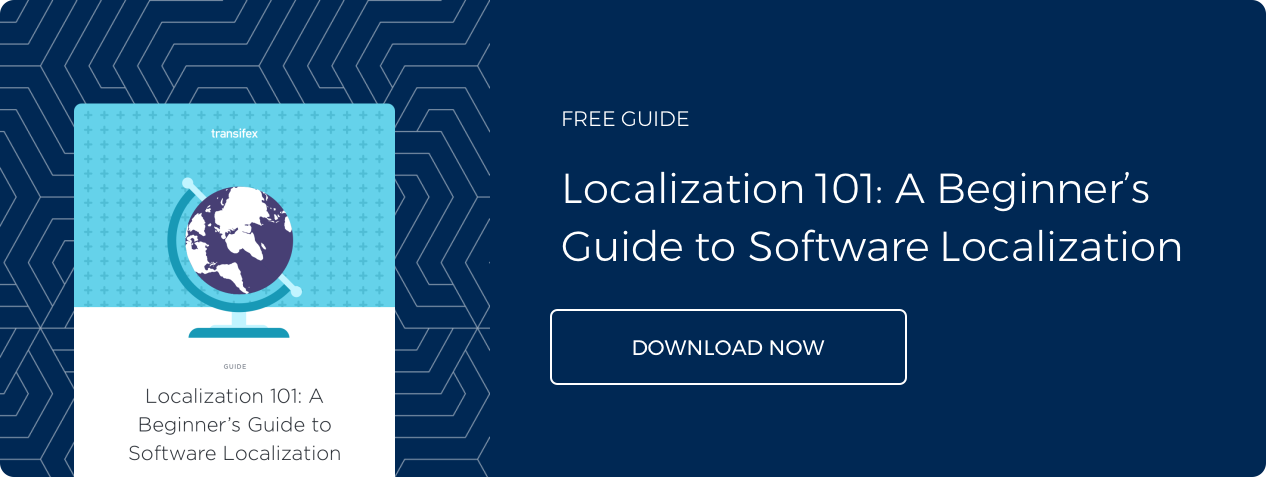

4 Best Practices for Localization Success
While there are no hard and fast rules or specific global standards that govern localization, there are some practices that will help you avoid the most common localization challenges and ensure a hassle-free process. After working with companies and organizations across the globe to launch and manage their translation management efforts, here are the four best practices we’ve observed across the board that have ensured localization success.
1. View localization as an extension of product development.
It’s time to shift the perception of seeing software localization as an isolated task that must be dealt with only in the final stages of your product release. Rather, you need to keep translation management in mind from day one of product development. From here, your entire development process should be conducted with attention and resources dedicated to localization-related tasks at each step of the way, from release to maintenance. This way, you will be creating a globalization workflow and framework that ensures your software can be easily translated into any languages necessary without extra work or time. In keeping localization-centric mindset throughout all your product development cycles, you will build a strong foundation for global expansion across all your content and products.
2. Keep your source language simple.
While your original content and products may have industry-specific words that appeal to your current select audience, this will be difficult to scale and maintain on a global level. This is because while the use of jargon or complicated words and phrases in your user interface may be relevant in your native language for your existing audience, there will be things lost in translation. As a result, the same messaging may fail to elicit the same positive response in other languages and cultures, once translated. To make translation and globalization easier, make sure to keep your source language (the language you’re using now) as simple as possible.
3. Focus on your content strings.
As for the technical side of things, it is important to understand that much of the localization process (and the act of bringing to life all your translations at scale) revolves around “strings,” the words and phrases that your audiences can find across your user touch points (website, application, products). This is where developers come to the rescue during the translation management process, ensuring that the strings are coded properly so that all user-facing strings are translated and aligned properly. If you’re a developer, it will be useful to stay up-to-date on all of the technical best practices for coding strings effectively with global expansion in mind.
4. Deploy a localization platform.
To create a comprehensive localization process, you need to plan for the steps beyond software development. This can be simplified through the use of a robust localization platform (also referred to as a translation management system or TMS). Localization platforms help by automating the translation management process. You can automatically pull all your user-facing (or “externalized”) strings across your website and content, make it available to translators, and manage the entire translation process including reviews and approvals. With a more robust localization platform, you’ll even able to automatically publish translated strings back into a main development repository, for code deployment across your various international markets.
If you’re in the stage of trying to figure out which localization platform is the best fit for your translation needs, keep in mind that some platforms can offer a higher level of customization and integrations (with tools such as GitHub, Python, and Django). A handful of localization platforms are also integrated with translation providers so you don’t have to spend time hiring and managing a team of translators.
Explore the Full #Localization101 Series
This post is part of the #Localization101 series, created to help everyone from developers to localization managers successfully launch and manage their localization efforts.
Explore the full #Localization101 series to catch up on other posts and learn everything you need to know for translation success:=
- 4 Steps to Creating a Software Localization Roadmap
- 4 Best Practices for Localization Success
- 5 Key Stages of the Localization Process
Ready, Set, Localize!
Looking for more insights on how you and your team can drive localization success? We’ve created a guide just for you, to help you better understand the software localization process and the results it will drive for your business when done effectively. Download our Localization 101 guide to better understand the key elements of localization, and even more specific steps and best practices for localizing your software from start to finish.








